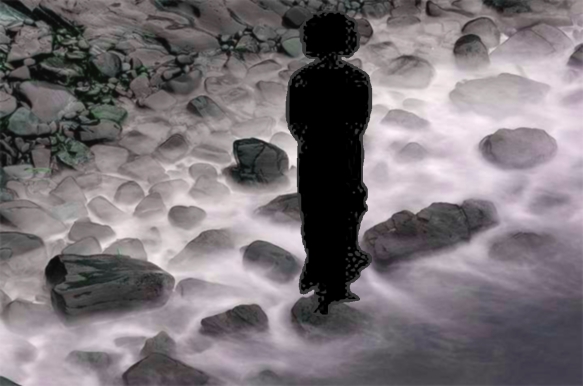“What’s happened to you, you’ve ballooned!“
The ‘tactful’ remark greeted my hesitant foray into the garden after a self confinement of nearly 5 months in my apartment. On venturing outside, I was only too aware that the garden lies in the epicenter of the ashram, subject to the sundry looks of passers-by, self advertised spiritual seekers. Ironically, the comment had issued from one of the longtime residents, hardly a slim woman herself.
The community had gone through an upheaval with the death of its founder 5 months earlier, and we were still reeling from sensational revelations of hidden wealth, silent immediate thefts by the managing council, and speculations about the true date of his death. [see for eg. http://www.ndtv.com/article/india/more-gold-found-in-sathya-sai-baba-s-ashram-in-puttaparthi-116432http://www.ndtv.com/topic/sathya-sai-central-trust; ] Unable to socialize, gossip, or add to the rumor mill, I’d shut myself up in my room. But, my room lies in the eye of the storm, behind Swami’s erstwhile residence, itself next to the big hall of worship where the 12 day death rituals were conducted–I could elude none of hysteria.
I’d lost the three of them over them over these 50 years of my life–Dad first when I’d just turned 15, Mum next, four years after my return from the States, and now, Swami two months into my 50th year. Menopausal, hurting with grief, I couldn’t take the socio-spiritual hubbub. So, for five months, I stayed within my little apartment. A box really, but one Swami had personally gifted to me just two years before he died. A prescient talisman, the room was simultaneously my protection and an object of envy, a double on the ground floor occupied by a questionable single feminist when whole families occupied a single.
How did the time of self immuration pass? Times of depression or great grief are periods of hibernation for the soul. The body may ache from lack of exercise, but the spirit needs silence and solitude to nurse itself back into human interaction. Menopause, lack of exercise, over-eating, all played their role: I knew I’d ballooned up.
But, still mentally vulnerable, that unthinking comment by a sista, a self-promoted white sari clad seeker, triggered my angry response, “Hey, you’re not so thin yourself. What gives you the fuckin’ right to comment on others?” Of course, she was righteously offended, unable to comprehend my anger or its cause. To her way of thinking, the remark was merely a casual joust, to me it was an insensitive blow to my already shaky psyche. I’d had to summon up my willpower and courage to go outside, into the glare of human interaction. Perhaps I unconsciously sought the friction of social intercourse that the scar tissue of ill-healed grief might toughen up?
Anger has always been my defense, armor to withstand the blows of the world. 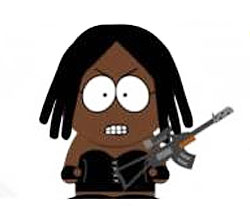 Where other folks cry, I scream. I throw tantrums. I used to break glass and crockery, tear up clothes, smarting from social hurts I couldn’t explain even to myself. “You’re oversensitive, you read too much into things,” friends and acquaintances advise me. But I’ve never been able to figure at what point sensitivity crosses over into the prohibited area of over-sensitivity.
Where other folks cry, I scream. I throw tantrums. I used to break glass and crockery, tear up clothes, smarting from social hurts I couldn’t explain even to myself. “You’re oversensitive, you read too much into things,” friends and acquaintances advise me. But I’ve never been able to figure at what point sensitivity crosses over into the prohibited area of over-sensitivity.
Unfortunately, in order to be a productive, socialized, civilized human, this knack of differentiation is a pre-requisite!
Fat is chain-mail too, a sheath both defensive and aggressive. [on a life changing book, see http://www.feministe.us/blog/archives/2012/04/09/fat-is-a-feminist-issue-2/ ] Right from childhood, I’ve been plump, overweight, at one point even labelled obese by the school doctor, a family friend. I remember my mum outraged by the word, “obese, what a word to use. She’s not obese!” So, the very first time I heard the word, it was an insult, an affront to parental nurturing. Looking up the word, I took in its connotations and cringed. That was the beginning of fat guilt: I was the culprit in my obesity. My mum consulted our family doctor after that report about my ‘obesity,’ and he put me on a diet. It didn’t work.
Obesity, however, didn’t come in the way of my activities. I played throwball, basketball, netball, even tried hurdling. Inclined to sports, and addicted to swimming, I continued stubbornly overweight. And obese I grew up–through my troubled teens, my father’s death, my college years in Anantapur, through grad school in the States, and my return to India and the ashram. It took my Mum’s death to make me lose weight. I walked miles each day, worked out frenziedly between times sitting in the big hall for Swami’s darshan. Appropriately enough, that was the time my sexuality made its presence anew after a decade of dormancy. I wonder if such sexual hunger at time of loss is a reaffirmation of life force, the urge to the species to continue to propagate its kind.
Crossing the forty watershed, I looked much younger than my age. It had nothing to do with weight, however–I’ve never looked my age thin or fat.  Now, at 52, I still don’t look my age, fat though I thankfully am. Looking young, to me, is more trouble than its worth. I’d rather look my age if not a little older: youthful looks often encourage patronage, particularly by the men. I still suffer from the occasional male follower, at a stage when sexuality is more trouble than it’s worth. How did I regain my weight and recover the self I’m most comfortable with? [see a wonderful post on self image: http://www.thefword.org.uk/features/2010/01/feminism_and_fa] A torn knee ligament which the aches and stiffness of menopause only made more painful, Swami’s death–the last of the trinity I love–and the accompanying depression/ grief. So here I sit, typing these words, too big for the world as ever. I’m out of the agoraphobia of intense loss, go for regular walks early morning, work out with weights, but I’m a big mama.
Now, at 52, I still don’t look my age, fat though I thankfully am. Looking young, to me, is more trouble than its worth. I’d rather look my age if not a little older: youthful looks often encourage patronage, particularly by the men. I still suffer from the occasional male follower, at a stage when sexuality is more trouble than it’s worth. How did I regain my weight and recover the self I’m most comfortable with? [see a wonderful post on self image: http://www.thefword.org.uk/features/2010/01/feminism_and_fa] A torn knee ligament which the aches and stiffness of menopause only made more painful, Swami’s death–the last of the trinity I love–and the accompanying depression/ grief. So here I sit, typing these words, too big for the world as ever. I’m out of the agoraphobia of intense loss, go for regular walks early morning, work out with weights, but I’m a big mama.
After 52 years of being obese, with a skinny interim of maybe 5-6 years, I have at long last learned to rejoice in my big self. Too large for the social spaces I’m in now, and spaces like academia that I moved in earlier, I am the right size for me. Men can’t easily talk down to me, either physically or intellectually, nor do most women. [see also– http://www.guardian.co.uk/books/2005/oct/11/gender.society ] Thin socialized women find me unsettling: loud, big, and rebellious, unable to conform. I make my friends uneasy, as I really have not much yen for company. My solitary self does not revel in too much interaction. [on singleness today, see http://www.brainpickings.org/index.php/2012/05/09/going-solo-klinenberg/; http://www.newyorker.com/arts/critics/books/2012/04/16/120416crbo_books_heller]. Most comforting now, I’ve begun writing again, taking up as much space as I want in words and letters.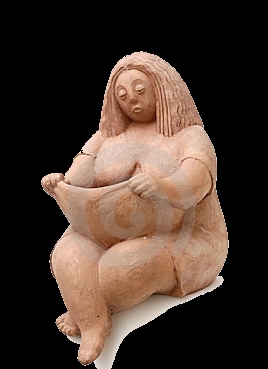
I spread myself easily: I am fat enough for comfort.

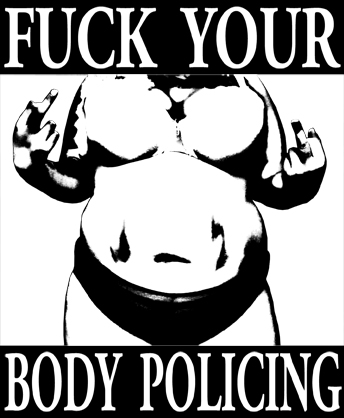
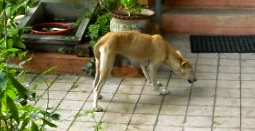

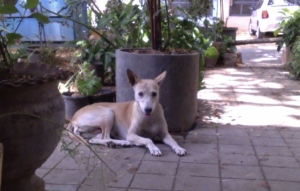

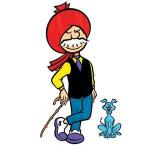 Even in
Even in 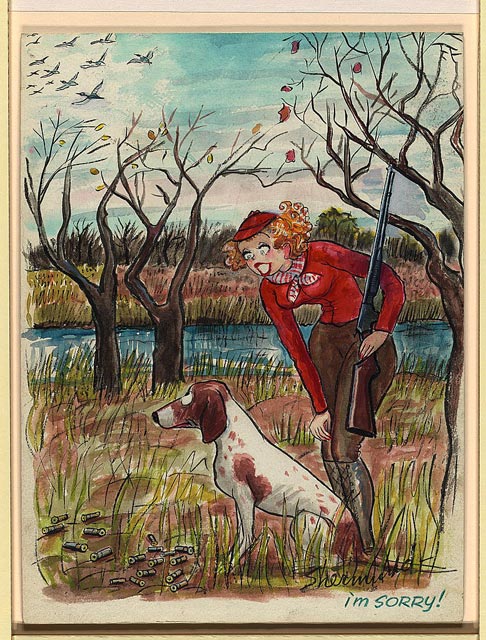
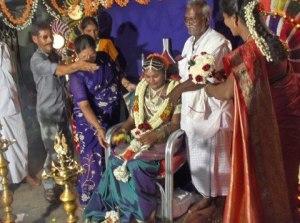
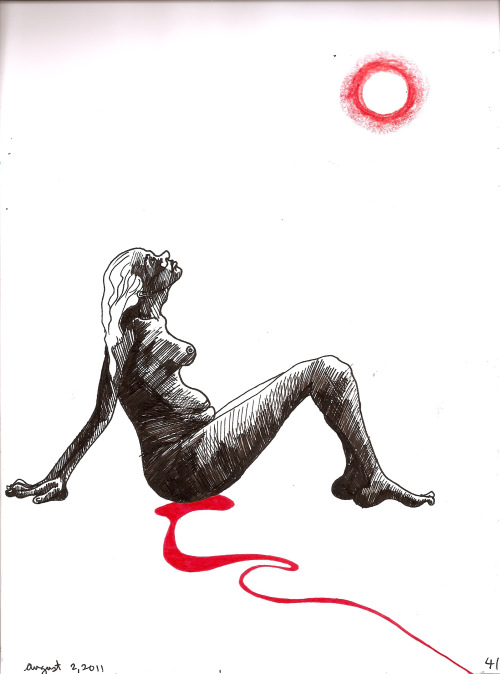


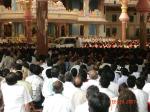 much worse as he’d keep the glass deliberately rolled up; and, finally, pushed around in the wheelchair almost eye level with the seated devotees.
much worse as he’d keep the glass deliberately rolled up; and, finally, pushed around in the wheelchair almost eye level with the seated devotees.